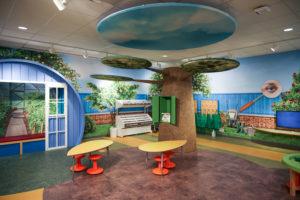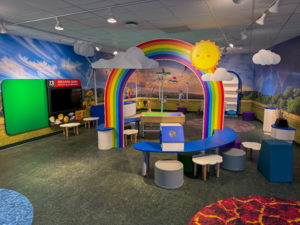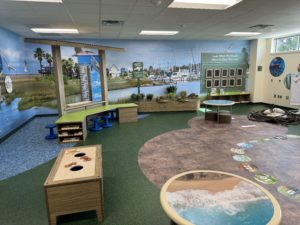In today’s world, children have constant access to screens. Computers, tablets, phones, and television are readily available at home. Research shows that children as young as 8 years old spend nearly 6 hours a day on screens.1
Fortunately, suggested guidelines around children’s use of technology help limit negative impacts, including lower attention span, higher instances of obesity, and delayed social-emotional development. However, encouraging media literacy remains an important objective in an increasingly technological world. Using guidelines and principles, teachers and caregivers can make informed, important, and intentional choices when using technology with young children.
In early childhood settings, passive uses of technology such as watching a video or completing an electronic worksheet, are discouraged as not developmentally appropriate practices. Rather, active uses of technology integration, such as students using apps to interact with greenscreens, students sharing their experiences by documenting them with digital cameras, or even students using video chatting software to connect with an expert at a museum can be highly beneficial.
Technology can increase opportunities for young children’s social-emotional, cognitive, and physical development when used in developmentally appropriate ways. Positive engagement with technology and interactive media can look like the following:
- Supporting skill development rather than replacing activities. The most important early childhood activities should continue to center on play and physical fitness.
- Using communication apps, such as Seesaw and ClassDojo, to build relationships with families and share classroom content and photos.
- Helping children author and illustrate their own stories and sharing the content with their peers.
- Providing access to curriculum and educational activities in varied ways for students with sensory, physical, intellectual, and other developmental disabilities.
- Co-viewing content with children, scaffolding with adult input, and open-ended questioning.
- Setting boundaries on screen time using recommendations from public health organizations.
It is the position of NAEYC and the Fred Rogers Center that technology and interactive media be tools that promote effective learning and development and are used intentionally by early childhood educators within the framework of developmentally appropriate practices to support learning goals established for individual children. When considering technology in your classroom, ask yourself the following guiding questions:
- Does the content or experience meet the developmental level of the students?
- Does the teaching software or technology convey stereotypes or negative social messages?
- Will the use of technology align and support what I’m teaching in the classroom?
- Have I set a boundary or time limit and shared expectations with students?
Remember, technology isn’t a bad thing. With positive intent and careful implementation, technology can unlock an entirely new world of learning for young children.

Colleen Incandela
Colleen Incandela is an Education Specialist for Exploration Zones. She brings more than two decades of child development experience to her role. Before joining the team, Colleen started her career as an educator before moving on to become an Assistant Principal and later Program Manager for Adler Planetarium in Chicago.



